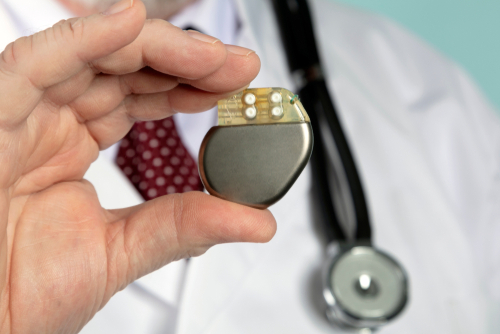Pacemaker Surgery Recovery: Elderly Recuperation
Category:

After experiencing heart troubles, a patient may be advised to undergo pacemaker implantation. But what does that entail? In this post, we will provide answers to the following questions:
-
Why should a patient get a pacemaker?
-
Is a pacemaker a major surgery?
-
Is pacemaker surgery invasive?
-
Are there pacemaker risks for the elderly?
-
How do you go about replacing a pacemaker battery in the elderly?
-
How do older adults recover from pacemaker surgery?
Why Should One Get a Pacemaker?
Doctors may recommend a temporary pacemaker to patients with a slow heartbeat after a heart attack, surgery, or overdose. This is done when the patient’s heartbeat is otherwise expected to recover. Afterward, a surgeon may implant a pacemaker permanently to correct a chronic irregular heartbeat or to help treat heart failure.
Is Getting a Pacemaker a Major Surgery?
No. Pacemaker surgery is a minor surgery that can take around 1-2 hours. Most patients go home within 24 hours after the procedure.
How Invasive Is Pacemaker Surgery?
The surgeon implants the pacemaker under the skin of the chest with no need for open-heart surgery. The patient will be put under local anesthesia but may receive some medications to keep them comfortable or help them fall asleep.
Is There a Risk of Pacemaker Surgery in Elderly Adults?
Pacemaker problems for the elderly are uncommon, but the Mayo Clinic notes that pacemaker replacement surgery risks include:
-
Infections near the heart, where the device was implanted
-
Blood clots near the pacemaker site
-
Blood in the area between the lung and chest wall
-
Blood vessel or nerve damage near the pacemaker
-
Bruising, swelling, or bleeding at the pacemaker site
-
Collapsed lung
-
Shifting of the device or leads, which could rarely lead to cardiac perforation
Furthermore, patients should call their doctor if they experience any of the following side effects after surgery:
-
Abnormal heart rhythm
-
Breathlessness
-
Chest pain
-
Dizziness
-
Fainting
-
Fever for longer than 2-3 days
-
Heart rate dropping below the pacemaker’s lowest setting
-
Hiccups for long periods of time
-
Redness, swelling, or pain at the site of the pacemaker
-
Swollen arm on the side, where the surgery took place
-
Weakness for prolonged periods of time
How Do You Go About Changing Pacemaker Battery in Elderly?
A pacemaker should last 5-15 years before replacing the battery. Pacemaker battery replacement in the elderly is usually less invasive. Furthermore, pacemaker battery replacement recovery is usually less than the initial implant procedure.
What Is Pacemaker Surgery Recovery in Elderly Like?
Some patients recover a few days after pacemaker implantation while others take months to recover. Patients are usually advised to take 3-7 days off of work after the procedure. However, a cardiologist may recommend taking more time off if they’re concerned about the patient’s overall health. Patients will also need to get a checkup 4-6 weeks after the procedure to see if small adjustments need to be made. Additional checkups will also need to be completed every 3-12 months.
As for lifestyle changes, patients will not be allowed to drive for at least six weeks or reach up on the side they had the procedure on for about 4-6 weeks. Additionally, cardiologists recommend avoiding sports for 4-6 weeks after pacemaker surgery. Overall though, most patients are back to resuming normal activities within four weeks.
Subscribe
Date: January 26, 2023
Category:


